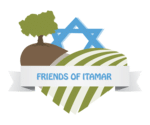Parashat Vaerah 2010 Revealed Miracles In Contrast to Hidden Ones — Moses Vs. Our Forefathers
Rabbi Moshe Goldsmith on Exodus Chapter 6 http://youtu.be/eYaVCjzdZiY
Parashat Shemot – Dec 2010 Understanding exile and redemption
Rabbi Goldsmith Exodus Chapter 1: http://youtu.be/WekT8W8kwxg
Parshat Tizaveh- Purim – 2010
Parshat Tizaveh- Purim February 25, 2010 In this week’s Parasha there is a clear hint to the holiday of Purim. In Parshat Tizaveh Moshe Rabbeinu is commanded to tell Aaron th
Parshat Mishpatim – Trumah – 2010
Parshat Mishpatim – Trumah February 12, 2010 Exodus 24:7 – “And Moshe took the book of the covenant and read in the hearing of the people and they said, “All that t
Parshat Yitro – Modesty Above Wisdom – 2010
Parshat Yitro February 5, 2010 Rabbi Moshe Goldsmith This week’s Torah portion is named after Yitro, Moshe Rabeynu’s father-in-law a former Midyanite priest. Our sage
Parshat Beshalach – 2010
Parshat Beshalach January 28, 2010 “And the children of Israel went into the midst of the sea on dry ground and the waters were a wall to them on their right hand and on thei
Parashat Bo – 2010
Parshat Bo January 23, 2010 Leah Goldsmith Like a big fish in a small pond, Pharoh ruled from his throne on the Nile. As this watering place replenished itself (and there was n
Parashat Vaera – 2010
Parshat Vaera January 15, 2010 “And G-d spoke to Moshe and said to him. I am the Lord, and I appeared to Avraham, to Yitzchak, and to Ya’akov, by the name of G-d Almigh
Parashat Shemot – G-D Watches Over His righteous Nation 2010
Parshat Shemot January 8, 2010 King Solomon in his book of Proverbs 13:23 writes “Much food is in the tillage of the poor: but there are others that perish without judgment.&
Parashat Bo 5769
Bo January 28, 2009 The combining of the letters bet and aleph form the name of our parsha, “Bo”. In gematria this equals the number three (aleph being one and bet bein

